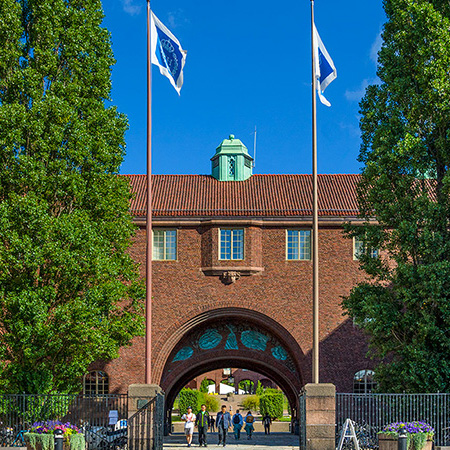With August reopening set, progress continues on digital education goals

KTH Royal Institute of Technology announced last week that it will reopen its five campuses on August 29, 2021, conducting most teaching and examination on site.
The that teaching and examination will be carried out on campus “with a focus on physical as well as digital presence.”
Sweden’s largest technical university is accepting incoming students for exchange studies, degree projects or internships. Exchange studies require physical presence at KTH. Incoming exchange students are expected to be present in Sweden for the exchange.
In the previous term, Spring 2021, nearly all lectures were held online. KTH limited its onsite education to essential interactions with instructors, while abiding by Sweden’s attendance restrictions for gatherings. Examinations were given both in person and online.
Long-held targets
Digital coursework is nothing new at KTH, which 10 years ago adopted a goal of offering equally outstanding quality in both physical and digital education by 2027—the 200th anniversary of the university’s founding. KTH Vice President for Education Leif Kari says that KTH intends to continue offering digital education which already equals the quality of the onsite experience, since there are some obvious advantages to digital learning.
“Digital learning is site-independent and sometimes also time-independent, which provides increased flexibility,” Kari says. He also refers to research from KTH’s Department of Learning which shows that digital education often leads to increased critical thinking and reflection, and that students become more active in their own learning, he says.
The pandemic has accelerated progress on KTH’s digital learning goals for 2027, showing the university’s strengths while casting in higher relief those areas where work remains to be done, he says.
Pandemic takeaways
“During the pandemic, we have really developed and gained experience and ability when it comes to conducting education that is mediated with digital technology,” Kari says.
Significant challenges lie ahead. The expedited turn to digital formats underscored the importance of the social dimension to higher education—many students and teachers missed the natural interaction of the classroom and lab and were compelled to put extra effort into creating communities and group dynamics online. And examining students digitally has proven a difficult way to assess students’ abilities without resorting to rigorous monitoring software that compromises students’ personal integrity.
Yet Kari says the university’s continued success is inseparable from digital education.
“We have long known that in order to be relevant as a university in the future, we needed to develop our digital education,” Kari says. “This is especially true in connection with our goal of broadened recruitment and lifelong learning, as digital education is often even more attractive to people in other life situations.”
The decision applies to the KTH main campus is located in central Stockholm, as well as the university’s four campuses in Södertälje, Flemingsberg, Kista and Solna.
David Callahan

